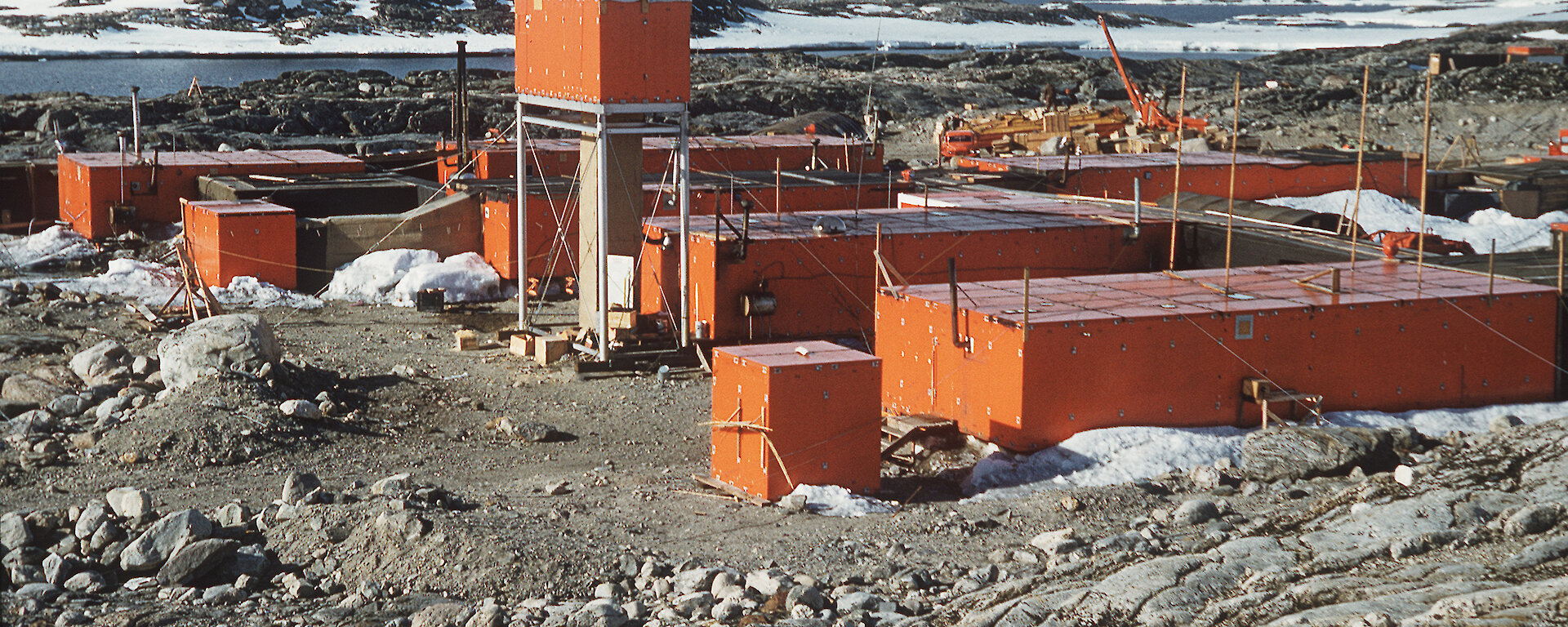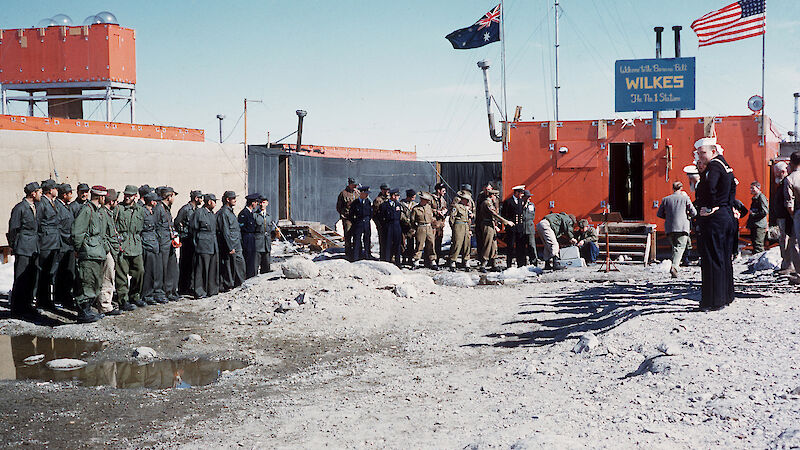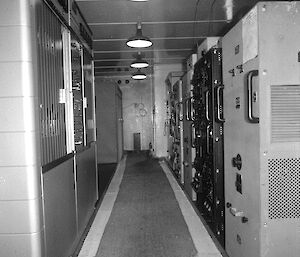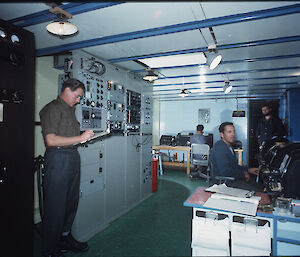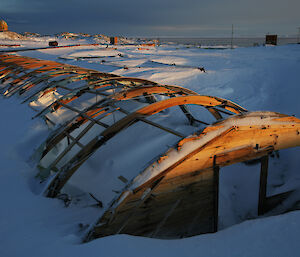US Navy personnel constructed the main part of Wilkes in 16 days, unloading 11,000 tons of material and supplies. It took a crew of over 100 to erect the station, which housed 24 naval personnel and scientists for the next 18 months. At the closure of IGY, the United States offered use of Wilkes to Australia.
Wilkes was seen to be strategically located because of its proximity to the south magnetic pole. Under an agreement with the United States, Australia was permitted to use the station stores and supplies that remained, on condition that nothing was removed and that Australia reported annually on consumption of stores and supplies. A hand-over ceremony was held on 4 February 1959.
As Wilkes had originally been built as a temporary station, rapid deterioration occurred in the extreme Antarctic environment. By 1964, the buildings had become a fire hazard due to fuel seepage, and the constant drift snow buried structures for most of the year. The deteriorated wooden buildings needed constant repair.
A plan to realise a new station Casey Repstat (‘Replacement station’) was developed on the other side of the bay. Repstat was commissioned in 1969 and Wilkes was closed.
Wilkes today
Wilkes station is now almost permanently frozen in ice and is only occasionally revealed every 4 or 5 years during a big thaw. Many objects remain embedded in the ice. Visitors are often able to see the remains of the station through the ice, seemingly exactly as it was left.
What remains at Wilkes are a number of barracks buildings known as Clements huts. There are also the remnants of the semi-cylindrical canvas store buildings known as Jamesway huts.
There is also a series of storage dumps and rubbish resulting from 12 years of occupation. The 3 sites in close proximity to each other: Wilkes, the Casey tunnel site and the new Casey station, demonstrate the changing attitude towards the removal of waste and used materials, and the evolution of Antarctic building technologies.

